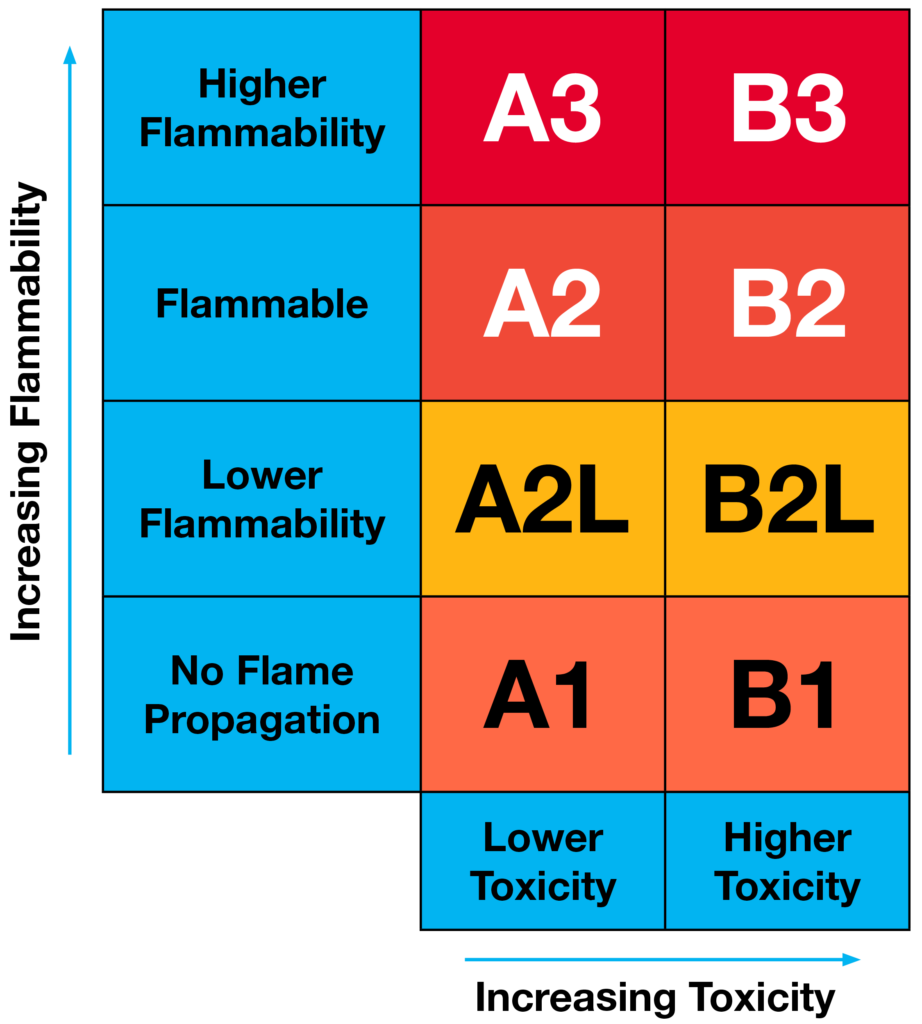What to Know About the 2025 HVAC Refrigerant Change
October 19, 2023
Get ready for the upcoming 2025 HVAC refrigerant change. Here’s what you need to know about A2Ls to start preparing.


In 2020, the American Innovation and Manufacturing (AIM) Act was enacted into law, which authorizes a 15-year phasedown of hydrofluorocarbons (HFCs) across of a variety of applications—including HVAC.
Come 2025, the Environmental Protection Agency (EPA) will set a 750 global warming potential (GWP) limit for air conditioning. This means that R-410A, with a GWP of 2,088, will no longer be able to be used in new equipment.
So, what will it be replaced with?
The most common low GWP alternatives are classified by ASHRAE as mildly flammable, or A2L. Due to their mildly flammable characteristics, A2L refrigerants will require updates to standards and building codes to allow for their safe installation.
But the good news is most contractors’ day-to-day work won’t change. It will be “business as usual,” says Jose De La Portilla, Senior Manager of Education and Training at Rheem.
Here’s what you need to know about the upcoming 2025 HVAC refrigerant change and A2Ls to start preparing.
What are A2L Refrigerants?
“A2L refrigerants can be a single refrigerant or a blend of multiple refrigerants in specifics amounts,” De La Portilla says.
A2Ls have a lower flammability rating compared to A3 refrigerants such as hydrocarbons, propane, and isobutane. They also have a lower toxicity rating than B series refrigerants such as ammonia. In fact, A2L refrigerants are considered the second safest class of refrigerants.

A2Ls and HVAC
A2Ls have been in use for years in small HVAC appliances such as window units or packaged terminal air conditioners (PTAC). They have also been used overseas in residential and commercial HVAC equipment.
Moving forward, there will be two primary refrigerants that be used for comfort cooling: R-454B and R-32.
“Rheem has chosen R-454B are our primary refrigerant,” De La Portilla says. “However, there may be some products, such as mini-splits, that use R-32.”
A2L Myths and Facts
Myth 1: A2L refrigerants are likely to cause a fire.
Despite their mildly flammable classification, A2L refrigerants are extremely hard to ignite. The amount of an A2L needed in the air to ignite is much larger and takes a tremendous amount of energy compared to an A3 refrigerant. Extensive testing with A2Ls and numerous heat sources—including cigarettes, lighters, power drills, and various household appliances—has been done, and no heat source produced ignition.
In fact, compared to propane and natural gas, A2L refrigerants have much lower flammability risk because of:
-
-
-
- Higher Lower Flammability Limit (LFL): A2Ls much reach a higher concentration to become flammable.
- Higher Minimum Ignition Energy (MIE): A2Ls are harder to ignite.
- Lower Heat of combustion (HOC): There is less energy released if burned.
- Lower Burning Velocity (VC): If lit, the flame spreads slowly.
-
-
In the unlikely event that an ignition event does take place, “A2Ls have a very lazy flame, and as soon as the heat source is removed, the flame extinguishes itself,” De La Portilla says.
Myth 2: If a leak occurs, I need to remove the entire charge, fix the leak and start again.
R-454B is classified as a zoetrope. It does have a glide (1.4°F), but it is so low that it can be topped off without the need to recover the entire refrigerant charge.
Myth 3: I have to take another EPA exam.
A2Ls might be regulated by the EPA, but there is not additional certification needed to work with A2Ls. Contractors and technicians who already hold an EPA Section 608 certification will be grandfathered in and do not need to take an additional exam.
Myth 4: I will need to buy all new tools.
Many tools used daily will not need to change. Some of your current tools may even already be A2L-approved. Check with your tool manufacturer to see what is approved.
Myth 5: I can add A2L refrigerants to a system designed for A1 refrigerants.
It is extremely important that A2L refrigerants are only used in equipment designed for A2L refrigerants. They cannot be used in existing A1 systems under any circumstance.
At Rheem, the following components have been redesigned for use with A2L refrigerants:
-
-
-
- Compressor
- Expansion valve
- Electrical components
- Refrigerant charge size
-
-
Rheem is actively involved in discussions on regulatory issues and will be sharing more information on A2Ls as 2025 gets closer. In the meantime, you can stay in the know with the latest in the industry today at Rheem.com/HVACKnowZone.







